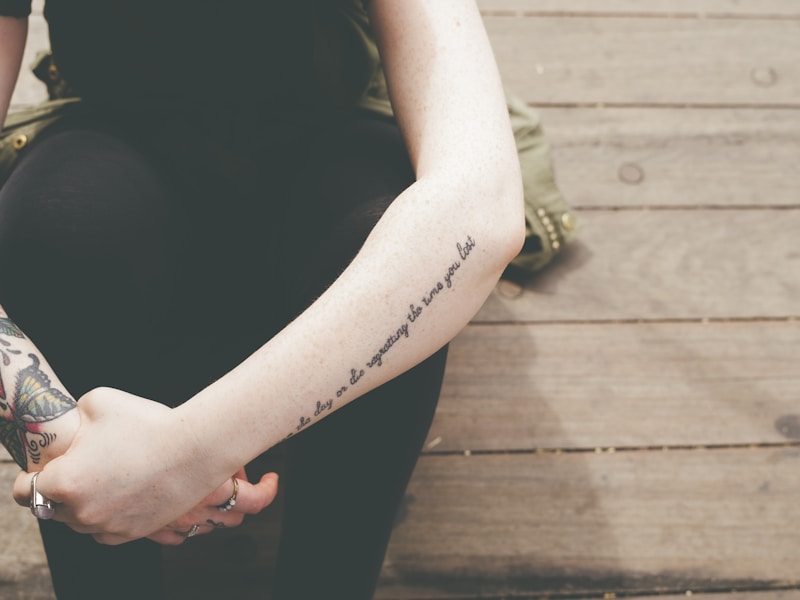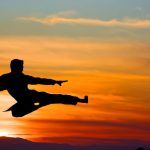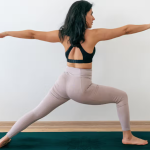Some of the simplest yoga poses can be made that little bit more special by adding in an arm variation, in the same way that a more advanced posture can give a student a little more of a challenge but adding in the same movement.
Try adding some of our favourite arm variations to your next practice and feel the way parts of the body start to open and stretch as you breath deeply into the postures.
1. Garudasana Arms
This is one of my favourite arm variations, as not only does it look great, but Eagle Pose also opens up many joints in the skeletal system and improves flexibility in the wrists, elbows, scapula and deltoids. If you take the full posture into the legs, then you also have the added bonus of opening up through the lower body too.
Garudasana is known to have some healing properties in relation to the sexual organs and reproductive system. The way in which the limbs are twisted means there is a supply of fresh oxygenated blood to the reproductive system, sex organs and kidneys, which then has the effect of increasing sexual vitality and balancing the hormones.
If that wasn’t enough to get you flying your arms into this variation, then we can tell you that it’s also known to aid asthma, lower backache and sciatica. For beginners it can be hard to find the full expression of the posture with the palms touching, but there are options to use a strap for help or to just have one palm touching the forearm rather than the other palm.
2. Reverse Prayer
Reverse Prayer Pose (Pashchima Namaskarasana) also known as Penguin Pose is an amazing way to open the chest and heart and to gain more mobility in the wrists and forearms. It’s not an easy posture to get into, but a good way to work towards it is to hold opposite elbows instead.
This posture may not look very ‘wow’ to some, but due to many muscles working in this posture, it’s extremely beneficial to the upper body. The muscles at work are the subscapularis, teres major, latissimus dorsi, rhomboids, lower, mid, and upper trapezius muscles; while the infraspinatus, teres minor, serratus anterior, anterior deltoids, and (if the scapulea are adducted) the pectoralis major and minor are being stretched. That’s a lot of muscles.
The Pashchima Namaskarasana arm variation is commonly seen in Tree Pose (Vrksasana), prasarita padottanasana and parsvottanasana, giving students an even deeper stretch.
3. Gomukhasana Arms
Cow Face Pose may have a slightly odd name, but that doesn’t change the fact that it’s a great way to feel an openness through the arms and chest, giving a lovely stretch through the armpits… it’s not often we say we’re stretching our armpits!
This arm variation can simply be added to tadasana for a nice warm up stretch or why not take the full posture with the legs stacked on top of one another as well. When in the full posture you can see why it’s called ‘cow face’, with the crossed legs looking like the lips and the up & down elbows looking like a pair of ears… kind of.
B.K.S. Iyengar says that cow face arms make the muscles more elastic, help to expand the chest and extend the latissimus dorsi. We think it’s one of the best shoulder openers around and even if you can’t reach your hands you’ll still get all of the same benefits from using a strap.
Gomukhasana is an excellent preparation posture for backbends and inversions like handstands and pincha mayurasana.
4. Urdhva Baddhanguliyasana
Upward bound fingers pose is one that finds it’s way into quite a few postures and even on it’s own whilst standing in tadasana or sitting cross-legged on the floor is a brilliant way to stretch through the fingers, palms, wrists and forearms.
We all naturally place our fingers together in a particular way and it can feel a little alien to change the way the fingers slot together, but it’s really great practice for your non-attachment to work through each finger slot. There can be a tendency sometimes to let the ribs fly out when the arms go up into this variation, so just bring your attention to that at the start and soften the ribs to find that balance.
Throw in Some Arm Variations
Whatever you opt for, arm variations are a great way to breathe some new life into an overused pose or to adjust poses to fit a class theme. The energetics of hand placement can also be a good thing to consider if you are teaching a more energetically focussed class. Try some out and see what happens!
See Also: 5 Essential Mudras and When to Use Them













